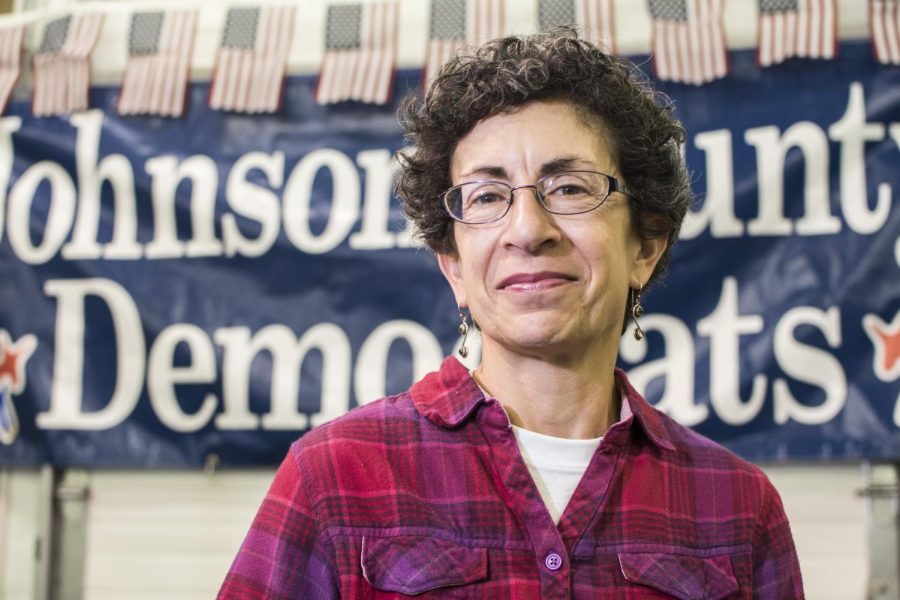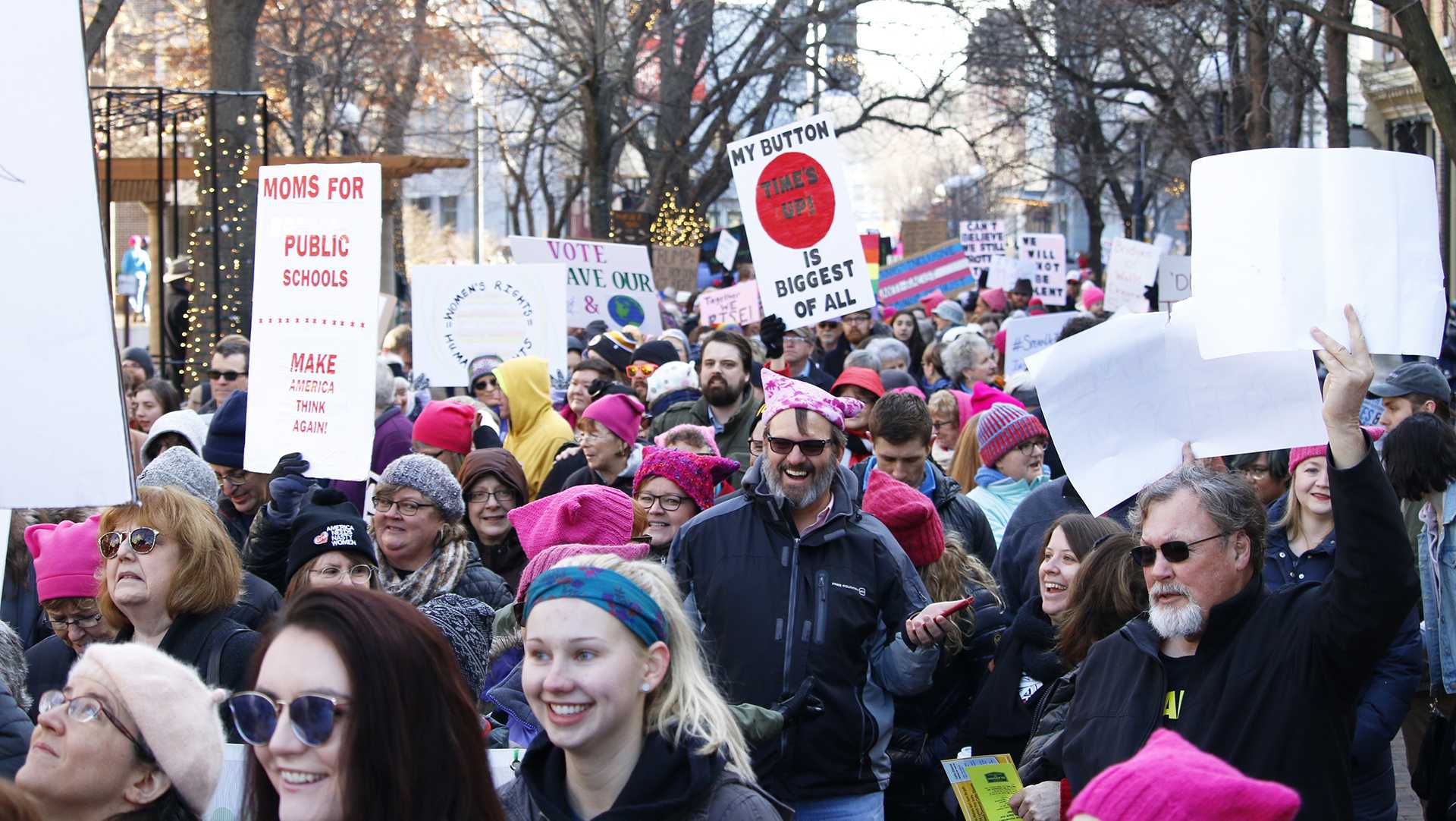Laursen: The year of the woman
For centuries women have been underrepresented in politics. 2018 has been record-breaking year for the number of women running in political office. As more women run, it is our job to ensure all women are represented.
Janice Weiner poses for a portrait during the Johnson County Democrats BBQ at the Johnson County Fairgrounds on Sunday, Oct. 15, 2017.
September 5, 2018
Females make up 23.3 percent of Iowa’s elected officials. In a state in which the number of women exceeds the number of men, that seems more than a little off. The reality is only 28 of the 100 members of the state representatives and 7 of the 50 state senators are women. Pretty bleak numbers that women should not be satisfied with.
The lack of representation does not come from women not winning races, it stems from a lack of women running. A City University of New York survey found that college-age men were twice as likely to have considered running for political office than were women. This is not because women are less qualified to run than men. Rather, women tend not to consider running for political office unless explicitly asked — men, on the other hand, think about running for political office without being prompted.
I interviewed Janice Weiner, a longtime U.S. diplomat who recently ran for the Democratic nomination for the 37th District state Senate seat. She said, “Women have always won in percentages commensurate with the numbers of those who have run. To increase those numbers, we must stand up and run — and run, and run, and run.”
Luckily, many have called 2018 “the Year of the Woman.” A record-breaking number of women are running in local, state, and national elections, and they’re winning. The last significant spike of representation for women was in 1992 — some attribute this to Anita Hill’s testimony against now Supreme Court Justice Clarence Thomas. Hill testified that Thomas sexually harassed her; despite her testimony, the Senate confirmed Thomas and he was sworn in, which enraged women around the country.
As many can imagine, women have yet again been enraged, this time by President Donald Trump’s belittlement of women. Weiner told me that her reasons for running for elected office were twofold: “The 2016 election and the overwhelming, empowering, amazing Women’s March.
“What 2016 wrought — in part — is a determination to grab hold of our own destiny.”
As we women continue to grapple with how underrepresented we have been and continue to be in politics, we must realize that there are glaring differences in political representation between white women and women of color. This is illustrated by a simple timeline of women’s “firsts” in politics. Hattie Wyatt Caraway became the first woman elected to the U.S. Senate in 1932 — she was white. The first woman of color elected to the U.S. Senate was Carol Moseley Braun in 1993, a 60-year difference.
The point I am trying to make is not that everyone should go out and vote for women just because they are women. Rather, I am urging men and women alike to encourage all women to run for elected office, not just white women, not just liberal or conservative women, not just upper-class women, but all women.
Why? Because “[women’s] voices matter and improve both the debate and the process at all levels,” Weiner said.
Women have a unique perspective on life that men will never understand and vice versa. I am tired of being represented by a majority of people who will never understand what it is like to live a life in the U.S. as a woman. So please, encourage your overachieving and over-qualified female friends to run for office. We got this.




